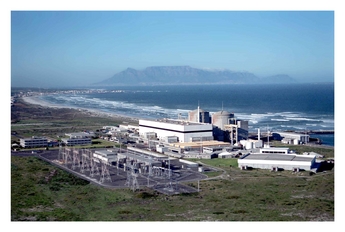 South Africa’s Portfolio Committee on Energy (PCE) on 27 November announced its strong support for including nuclear power in South Africa's future electricity mix, when it formally adopted its report on the government’s 2018 Draft Integrated Resource Plan (IRP), following public hearings held in October.
South Africa’s Portfolio Committee on Energy (PCE) on 27 November announced its strong support for including nuclear power in South Africa's future electricity mix, when it formally adopted its report on the government’s 2018 Draft Integrated Resource Plan (IRP), following public hearings held in October.
Portfolio Committees are appointed from members of South Africa's National Assembly to provide parliamentary oversight on the work of government departments. The committee’s report is in contrast to the draft IRP, based on a "least-cost" scenario for South Africa's future electricity mix, which ruled out expensive nuclear power at least until 2030.
The committee recommended in a report ot hte Department of Energy that the IRP should "make it explicit that both coal and nuclear will remain important elements of South Africa's energy mix".
"There is no persuasive argument to counter the proposition that nuclear technology remains the cleanest, safest and, in the long term, the cheapest technology," the report noted.
However, the Department of Energy's draft IRP, which is expected to be finalised in early 2019, puts renewables and gas as the least-cost electricity mix for new power stations.
South Africa's first IRP (2010) came into effect in 2011, and was expected to be frequently be revised. It has been updated several times, but subsequent versions never became official policy. IRP 2010 called for construction of 9600MWe of new nuclear capacity over the period to 2030.
In December 2016, state-owned utility Eskom released a request for information to support the future procurement of new nuclear capacity under the existing IRP. However, The South African High Court subsequently found ministerial determinations underpinning the nuclear procurement plans to be unlawful and unconstitutional and it, along with intergovernmental nuclear cooperation agreements were set aside.
The 2018 Draft IRP proposes the addition of new coal, hydro, solar, wind and gas capacity. It envisages an a generation mix by 2030 dominated by coal (46%), gas (16%), wind (15%) and solar (10%). Nuclear's 1860MWe Koeberg nuclear power plant would represent 2.5% of installed capacity, less than hydro (6%) and pumped storage (4%).
Photo: South Africa's Koeberg nuclear plant, under the current plans, could represent just 2.5% of installed capacity in 2030



